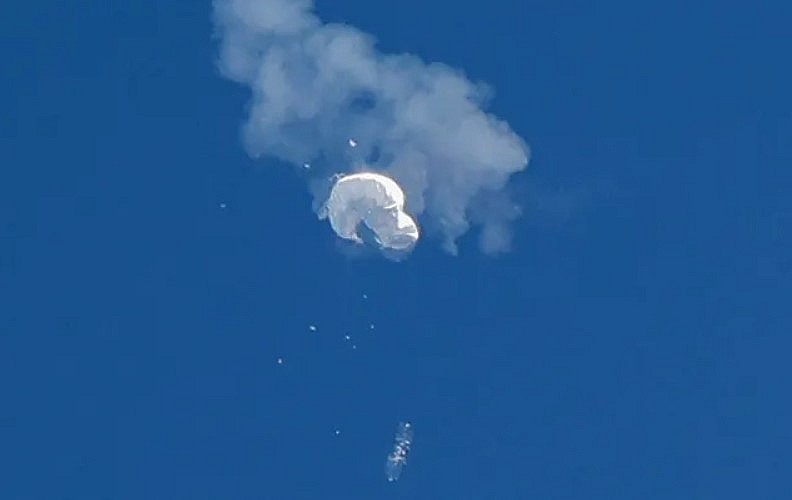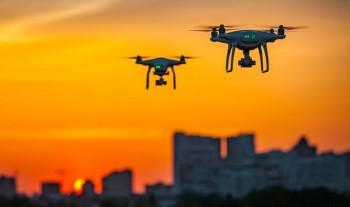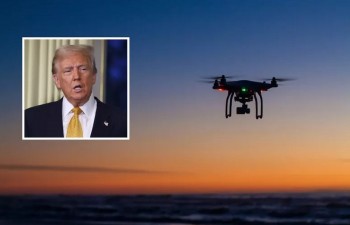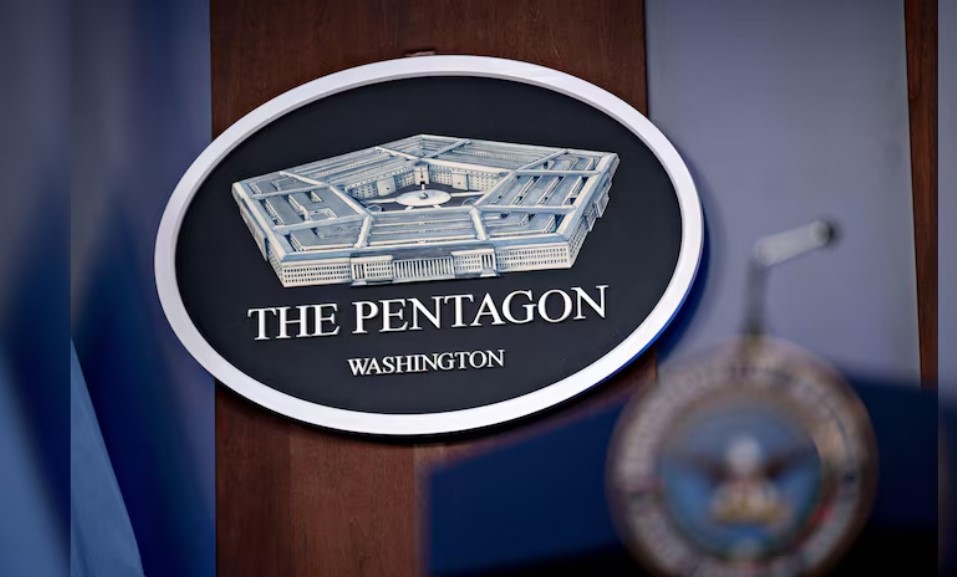Chinese Spy Balloon Off U.S. Coast: A National Security Concern
In early 2023, a high-altitude Chinese surveillance balloon traversed the United States before being shot down off the coast of South Carolina. The incident sparked significant diplomatic tension between the U.S. and China, raising serious concerns about national security, espionage, and the vulnerabilities of American technology. A recent report revealed that the balloon carried technology from at least five American companies, further complicating the issue.
 |
| A Chinese spy balloon is shown being shot down off the coast of Surfside Beach, S.C., on Feb. 4, 2023 |
The Incident: A Timeline of Events
The Chinese spy balloon was first detected over Alaska before making its way across the continental United States. The balloon floated from the Northwest through Montana, where it passed over sensitive military installations, before continuing its journey toward the East Coast. On February 4, 2023, the U.S. military intercepted and shot down the balloon over the Atlantic Ocean near South Carolina.
Following its destruction, debris was recovered and analyzed, revealing sophisticated surveillance technology. Beijing initially dismissed the allegations, claiming that the balloon was a civilian weather monitoring device that had veered off course. However, a thorough investigation conducted by U.S. intelligence agencies confirmed that the balloon was part of a broader espionage effort by the Chinese government.
American-Made Technology Found in the Balloon
One of the most alarming aspects of the investigation was the discovery that the spy balloon contained components from at least five U.S.-based technology firms. Among the equipment recovered were:
-
A satellite communication module
-
Advanced sensors for data collection
-
Various other surveillance components housed within a foam cooler
According to a Newsweek report citing sources familiar with the U.S. military's technical analysis, some of the technology inside the balloon included parts from the following American companies:
-
Iridium Communications – A satellite communications provider based in Virginia. One of its products, the Iridium 9602 short burst messaging module, was found in the balloon’s communication system.
-
Texas Instruments – A major semiconductor manufacturer whose components were reportedly part of the balloon’s operational electronics.
-
Omega Engineering – A firm specializing in sensors and instrumentation, contributing to the balloon's ability to collect atmospheric and environmental data.
-
Amphenol All Sensors Corp. – A company that produces advanced sensor technologies.
-
Onsemi – A semiconductor manufacturer that provides components for various electronic applications.
Additionally, parts from STMicroelectronics, a Swiss semiconductor company, were identified in the balloon.
Implications for National Security
The discovery of U.S.-made components in a Chinese spy device underscores a significant challenge in national security: the accessibility of advanced technology on the global market. The fact that adversarial nations can legally purchase and repurpose American-made technology for surveillance and espionage raises concerns about regulatory oversight and potential loopholes in export controls.
Commercially Available Technology in Espionage
Many of the components found in the balloon are available on the commercial market and are widely used in civilian applications. Companies like Iridium manufacture satellite communication modules used for legitimate purposes such as wildlife tracking, navigation, and research. As Iridium’s executive director for communications, Jordan Hassim, explained, “There's no way for us to know what the use is of a specific module... It could be a whale wearing a tag tracking it, it could be a polar bear, an explorer hiking a mountain.”
However, when such technology falls into the wrong hands, it can be exploited for espionage. The incident highlights the difficulty of monitoring and controlling how commercially available technology is used once it is sold and distributed.
Potential Policy and Regulatory Responses
In light of this discovery, the U.S. government may need to reassess its policies on technology exports and trade regulations. Some potential responses could include:
-
Stronger Export Controls: Tightening restrictions on the sale of sensitive technology to foreign entities, particularly those associated with adversarial governments.
-
Enhanced Tracking Mechanisms: Implementing more robust tracking systems to monitor the sale and distribution of key technological components.
-
Partnerships with Private Sector: Encouraging companies to work closely with the U.S. government to identify and prevent the misuse of their products.
-
Legislative Actions: Lawmakers may push for new regulations that hold technology companies accountable for how their products are distributed and used abroad.
U.S.-China Relations and Diplomatic Fallout
The incident exacerbated already tense relations between the United States and China. The U.S. government responded with strong diplomatic protests and further scrutiny of Chinese technological activities. The discovery of American-made components in the spy balloon also intensified debates over economic interdependence and national security.
China, on the other hand, condemned the U.S. for shooting down the balloon, maintaining that it was a civilian weather balloon and accusing the U.S. of overreacting. Despite these claims, the intelligence community’s findings suggest that the balloon was part of a larger pattern of Chinese aerial surveillance efforts.
The U.S. has since increased its monitoring of potential Chinese espionage activities, including greater scrutiny of aerial and satellite surveillance tactics. This incident also reinforced the Biden administration's push for stricter regulations on technology transfers to China and closer collaboration with allied nations on intelligence-sharing.
The Broader Context of Chinese Surveillance Activities
The Chinese spy balloon is just one example of Beijing’s broader strategy of gathering intelligence through various means, including cyber-espionage, satellite reconnaissance, and traditional human intelligence gathering. Over the past decade, China has been accused of conducting extensive cyber operations targeting American infrastructure, corporations, and government agencies.
Additionally, China has been developing advanced satellite capabilities and investing heavily in artificial intelligence and machine learning for surveillance purposes. The balloon incident is a reminder of the evolving landscape of global intelligence operations and the need for constant vigilance.
Conclusion
The 2023 Chinese spy balloon incident underscored the growing threats posed by espionage and the unintended consequences of globalized technology markets. The discovery of American-made components within the balloon raises pressing questions about the regulation and control of sensitive technology. Moving forward, policymakers, intelligence agencies, and private-sector companies must collaborate to address these vulnerabilities and ensure that U.S. technology does not end up aiding adversarial surveillance operations.
As the geopolitical landscape continues to shift, incidents like this serve as a wake-up call for both national security and technological oversight. While advancements in communication and sensor technology offer significant benefits, they also present risks that must be carefully managed to protect national interests and maintain global security.
 How Many Drones Are Registered in the U.S.? How Many Drones Are Registered in the U.S.? How many drones are registered in the U.S, what are the specific regulations, and is flying at night legal? |
 White House defends legitimacy of recent Drone activity amid Trump’s criticism White House defends legitimacy of recent Drone activity amid Trump’s criticism The White House clarified that the drones observed in various regions of the United States were operating "legally and lawfully." |
 Drones Crash at Orlando Christmas Show: Injuries, FAA Investigation Drones Crash at Orlando Christmas Show: Injuries, FAA Investigation Drones fell into the crowd during a holiday show at Lake Eola in Orlando, Florida, causing injuries and forcing the cancellation of the second performance. |
 More Questions for New Jersey Drone After White House Press Secretary's Explanation More Questions for New Jersey Drone After White House Press Secretary's Explanation White House press secretary Karoline Leavitt stated on Tuesday that the drones that alarmed New Jersey residents last month were "not the enemy," but their ... |























